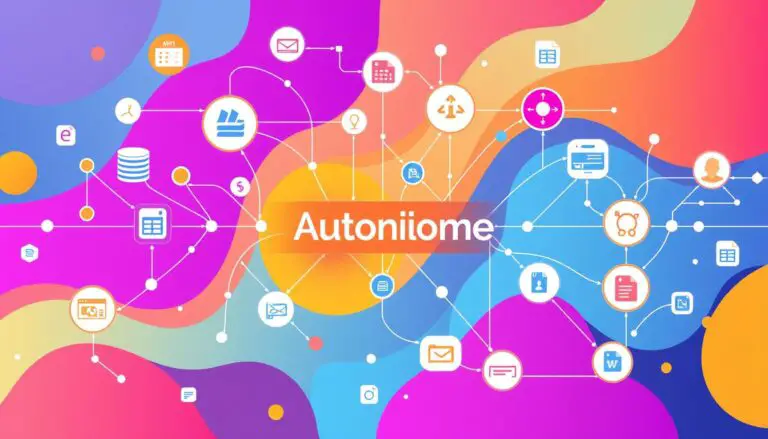We Recommend the Best Coding AI for Beginners: A Guide
What if you could accelerate your journey into software development with an intelligent partner that understands your goals? The landscape of programming support has fundamentally changed. Newcomers now have access to powerful resources that were once the domain of experienced developers.
We recognize that selecting the right tool can feel overwhelming. This guide cuts through the noise. Our goal is to provide a clear path forward for those starting their programming journey in 2025.
We have conducted thorough testing and analysis. Our recommendations are based on real-world use and a deep understanding of the challenges faced by new developers. We evaluate factors like ease of use, learning curve, and the quality of support provided.
This resource covers a range of options to suit different budgets and learning styles. Our commitment is to deliver transparent, unbiased assessments. We want to empower you to make an informed decision that supports your growth.
Key Takeaways
- AI-powered programming assistants have transformed how new developers learn and write code.
- Choosing the right tool requires understanding your specific learning objectives and project needs.
- This guide is built on extensive testing and analysis of real user experiences.
- Recommendations consider ease of use, feature accessibility, and pricing models.
- Both free and paid options are explored to accommodate various budgets.
- The focus is on tools that can grow with your skills over time.
- Our assessments are designed to be transparent and helpful for making an informed choice.
Introduction to AI-Powered Coding Tools
The core process of writing software is undergoing its most significant transformation in decades. We are moving from manual, line-by-line programming to a collaborative model. Developers now work alongside intelligent assistants that grasp context and intent.
These tools do not replace human developers. Instead, they significantly enhance capabilities and efficiency. They handle tasks ranging from simple debugging and formatting to complex duties like architectural suggestions.
Why AI is Revolutionizing Coding
This technology revolutionizes the craft by drastically reducing time spent on repetitive work. Developers can focus on creative problem-solving and building innovative features. They are freed from getting bogged down in syntax errors or boilerplate code.
The Impact on Developer Efficiency
The most powerful assistants understand your specific codebase and standards. This makes their recommendations truly context-aware and immediately useful. For example, when working within an integrated development environment (IDE), the AI can align with your project’s unique setup.
Productivity gains extend far beyond generating code. These tools automate testing, create documentation, and suggest refactoring. They even help developers learn new languages or frameworks more quickly than traditional methods.
Understanding the Product Roundup Format
Navigating the landscape of programming assistance tools requires a clear framework for comparison. Our roundup format provides this structure, allowing you to see how different options stack up against each other.
This approach helps you identify which solution aligns with your specific needs and learning style. We examine each tool’s capabilities through multiple lenses.
What to Expect from This Guide
You’ll find detailed assessments of each recommended programming assistant in our list. Our testing process involved real-world scenarios to evaluate practical performance.
We provide transparent information about features and limitations. This honest review approach ensures you get a complete picture before making decisions.
How We Evaluated Each Tool
Our evaluation methodology focused on practical effectiveness. We tested how well each assistant handles common development challenges.
Key criteria included syntax support, debugging capabilities, and integration ease. We also assessed scalability and collaboration features.
The testing experience involved generating code, fixing errors, and creating documentation. This hands-on approach ensures our recommendations are based on real performance.
The Evolution of AI in Coding
The journey of artificial intelligence in software development has followed a remarkable trajectory from basic assistance to sophisticated collaboration. We’ve witnessed tools evolve from simple text editors to intelligent systems that understand complex project requirements.
Many experienced developers recall the moment when ChatGPT demonstrated its ability to create functional applications. The surprise was genuine when it generated a working WordPress plugin without manual debugging. This marked a significant threshold in capability.
Historical Milestones in AI Coding
Early tools focused on basic autocomplete and syntax highlighting. Machine learning then introduced smarter suggestions based on patterns. The emergence of large language models trained on vast code repositories represented a major leap forward.
These LLM-based systems could understand context and generate coherent code blocks. Integration into development environments made the technology immediately accessible to programmers. Each advancement built upon previous breakthroughs.
Emerging Trends in 2025
The current trend moves toward multi-agent systems with specialized roles. Imagine one agent generating code while another performs reviews. A third might create documentation while a fourth ensures thorough test coverage.
Modern tools increasingly understand entire codebases rather than individual files. This enables contextually relevant suggestions that consider project architecture. There’s also growing emphasis on security-first approaches that scan for vulnerabilities.
Specialization continues with models focusing on specific languages or tasks. Some excel at test generation while others prioritize code review capabilities. This allows developers to choose tools matched to their specific needs.
Role of AI in Enhancing Developer Productivity
Modern development workflows are increasingly defined by intelligent automation that handles routine work. This shift allows programmers to concentrate on creative challenges and complex system design. The impact on overall output is substantial.
We see these tools taking over duties that once consumed valuable hours. They manage formatting, generate standard function templates, and write documentation comments. This automation frees mental space for unique business logic.
Automating Repetitive Tasks
The scope of automation extends far beyond simple chores. Advanced systems perform comprehensive reviews across entire codebases. They identify potential bugs, security flaws, and performance issues in seconds.
These assistants also provide intelligent suggestions for architectural improvements. They highlight opportunities to refactor for better maintainability. Recommending appropriate design patterns for specific scenarios is another key strength.
This acceleration helps teams meet deadlines without sacrificing quality. Errors are caught early, and implementations are more efficient from the start. Consistent standards are maintained throughout the project lifecycle.
For those new to programming, this support is invaluable. It reduces frustration with syntax and offers immediate feedback. This helps establish solid habits, a point supported by research into AI improving developer experience.
Automating test coverage is another critical gain. Tools generate unit tests and edge case scenarios that might be overlooked. This results in more robust and reliable software with significantly less manual effort.
Deep Dive into GitHub Copilot: Features and Limitations
GitHub Copilot’s emergence marked a turning point in intelligent code assistance technology. We examine this pioneering tool that has become essential for many developers. Our analysis covers its core functionality and practical considerations.
Key Functionality and Integration
GitHub Copilot provides intelligent suggestions by analyzing comments and existing code. It completes lines or entire functions based on your project context. The integrated chatbot handles questions, debugging, and natural language queries.
The tool works seamlessly with popular development environments. These include Visual Studio, Neovim, Visual Studio Code, and JetBrains IDEs. It supports multiple programming languages like TypeScript, Golang, Python, and JavaScript.
Pros, Cons, and Real-World User Experiences
GitHub Copilot excels at providing quick, context-aware assistance. It understands your current project and offers relevant suggestions. The extensive language support and GitHub ecosystem integration are significant advantages.
However, users report code duplication across projects. The tool sometimes generates inefficient implementations. Test case generation for larger codebases remains limited, and advanced features require paid plans.
Real-world experience shows seamless VS Code integration makes help readily available. Yet the generated code often requires substantial revision before production use. Developers must carefully review all suggestions to ensure quality.
Exploring Qodo: Comprehensive SDLC Coverage
Unlike many tools that focus on specific development phases, Qodo offers comprehensive support across the complete software development process. This approach distinguishes it from competitors with narrower scopes.
We find Qodo’s architecture particularly innovative. It employs three specialized agents that work together throughout the development lifecycle.
Innovative Test Generation and Code Review
The Gen agent handles code creation and test writing. Cover focuses exclusively on improving test coverage across your entire codebase.
Merge provides intelligent pull request analysis and automated code review. These agents operate with deep context awareness through RAG-based indexing.
This multi-agent system ensures thorough quality assurance from initial development through final review. The automated test generation saves significant time while maintaining reliability.
Pricing and Enterprise Considerations
Qodo offers a generous free Developer plan with 250 credits. The Teams plan costs $30 per user monthly and provides 2,500 credits.
Enterprise customers receive custom pricing with full platform access. Advanced features like SOC2 compliance require paid subscriptions.
The tool integrates seamlessly with popular IDEs and supports multiple programming languages. This makes it adaptable to various development environments and framework requirements.
Unpacking Tabnine’s Intelligent Code Suggestions
Tabnine stands apart with its deep learning foundation that personalizes suggestions based on individual developer patterns. This tool learns from your specific style over time, creating increasingly relevant completions.
The system adapts to your preferences while maintaining high-quality output. It examines your project context to deliver appropriate assistance.
AI-Driven Refactoring and Documentation
Tabnine excels at suggesting structural improvements that enhance readability and efficiency. The refactoring guidance helps maintain clean, functional code.
Automatic documentation generation creates comprehensive explanations for functions and classes. This feature supports team collaboration and long-term maintenance.
The built-in linting functionality identifies potential issues before they become problems. It suggests fixes to ensure error-free development.
User Insights and Customization Options
While Tabnine leverages extensive open-source data, beginners may find suggestions less intuitive with unfamiliar programming languages. The tool requires some adaptation period.
Customization options allow teams to enforce organizational standards. The enterprise version keeps code on local servers for enhanced security.
Pricing includes a free tier with basic completions. The Dev plan costs $9 per user monthly, adding chat and test generation. Enterprise offers advanced security at $39 per user each month.
Introducing Bolt: Browser-Native AI for Prototyping
Bolt redefines rapid application development by eliminating traditional setup barriers through browser-native execution. This innovative tool built on StackBlitz WebContainers allows developers to describe full-stack applications in plain English and instantly generate functional prototypes.
From Concept to Code in the Browser
The workflow begins with natural language prompts that scaffold complete application structures. Developers receive immediate visual feedback as the system generates frontend components and backend endpoints in real-time.
Every development aspect happens within the browser environment, including package installations and terminal commands. This approach removes the friction that often frustrates those starting their programming journey. The integrated services support Netlify deployments, Supabase backend setup, and Stripe payment integration.
Bolt excels at rapid prototyping for validating product ideas and creating minimum viable products. As highlighted in our detailed Bolt analysis, the tool demonstrates particular strength in educational environments and stakeholder demonstrations.
However, the platform currently restricts work to its proprietary interface without external IDE compatibility. The generated output targets demos and small applications rather than production-scale systems.
Pricing includes a Free tier, Pro plan at $25 per month, Teams at $30 per member monthly, and custom Enterprise options. This makes the tool accessible for individual experimentation while supporting team collaboration needs.
Amazon Q Developer: AI for AWS-Native Architecture
The AWS ecosystem gains a dedicated programming companion with Amazon Q Developer, designed to streamline cloud-native application development. This specialized tool understands the unique requirements of building on Amazon’s cloud platform.
Integration with AWS and Enhanced Security
Amazon Q Developer integrates deeply with AWS services through direct API interactions. The assistant provides specific guidance on AWS best practices and generates infrastructure as code templates.
Security remains a cornerstone feature with strict adherence to AWS IAM roles and organizational access controls. This ensures all automated actions and code suggestions comply with your security policies.
Full IDE support includes seamless integration with Visual Studio Code. Developers benefit from inline chat functionality and multi-file editing capabilities without leaving their environment.
Performance in Real-World Scenarios
The tool handles agentic tasks including bash command execution and automated testing. It generates code diffs and performs direct file operations for comprehensive development support.
However, user feedback indicates occasional accuracy issues and slower response times compared to competitors. The free tier limitation of 50 interactions per month restricts practical daily use.
Amazon Q Developer remains accessible through multiple channels including CLI, AWS Console, and mobile applications. This flexibility supports developers across different working environments.
Comparative Insights: Pros and Cons of Leading AI Tools
Our comparative analysis reveals distinct strengths and limitations across the leading code generation platforms. Each solution targets specific development scenarios with specialized approaches.
Understanding these differences helps developers select tools matching their project requirements and workflow preferences.
Side-by-Side Feature Analysis
GitHub Copilot excels within integrated development environments, offering context-aware suggestions based on current projects. Qodo spans the entire software lifecycle with specialized agents handling different phases.
Tabnine adapts to individual programming styles while prioritizing privacy. Bolt enables rapid prototyping directly in browsers. Amazon Q Developer specializes in AWS architecture support.
Each platform demonstrates unique value through different integration methods and language support capabilities.
How They Address Real-World Developer Challenges
These tools approach common programming problems differently. GitHub Copilot focuses on immediate contextual assistance during active development work.
Qodo provides comprehensive coverage from initial coding through testing and review phases. Tabnine emphasizes personalized suggestions that improve with continued use.
Bolt accelerates prototyping by eliminating environment setup barriers. Amazon Q Developer streamlines cloud-native application development.
Common advantages include effective automation of repetitive tasks and significant productivity gains. However, occasional accuracy issues require careful code review before implementation.
Free versions often limit advanced features, and generated output quality varies by task complexity. Real-world testing remains essential for evaluating practical performance beyond marketing claims.
How We Selected the Best Coding AI for Beginners
Our methodology combined hands-on testing with comprehensive user feedback analysis. We developed a rigorous process to evaluate each programming assistant’s practical value.
Selection Criteria and User Testing
We established multiple evaluation categories to assess how each tool handles fundamental programming challenges. These included syntax navigation, debugging capabilities, and code optimization.
Integration compatibility and scalability were equally important considerations. We examined how well each solution supports team collaboration and version control workflows.
Our testing involved real-world scenarios rather than artificial benchmarks. We assessed performance when generating functional code, fixing realistic bugs, and creating comprehensive tests.
We specifically evaluated each tool’s learning curve and beginner-friendliness. Interface intuitiveness and explanation quality were key factors in our assessment.
Cost-effectiveness remained a crucial consideration throughout our selection process. We carefully analyzed free tier limitations and the value provided at different pricing levels.
Showcasing Free vs. Paid Versions of AI Coding Assistants
Budget considerations play a crucial role when selecting the right development assistant for your specific needs. We examine the critical differences between free and paid options to help you make informed financial decisions.
Most platforms offer a basic free version with limited functionality. These trial options provide sufficient access for initial exploration and small projects.
Cost-Effectiveness for Individual Developers
For solo practitioners, free tiers often deliver excellent value. Qodo provides 250 credits in its complimentary plan, while Tabnine offers basic completions without charge.
Entry-level paid plans typically range from $9 to $25 per month. These subscriptions unlock advanced features like AI chat and enhanced test generation capabilities.
Value Propositions for Teams and Enterprises
Team plans introduce collaboration tools and management controls. GitHub Copilot Business costs $19 monthly per user, while Qodo Teams runs $30 per member each month.
Enterprise versions justify higher pricing through security features and compliance certifications. These premium options support organizational standards and scalable deployment.
We recommend starting with free versions to evaluate functionality. Upgrade selectively to paid plans as your project complexity grows and specific tools become essential to your workflow.
Using AI Tools in Real-World Projects: Practical Examples
The transition from evaluation to actual project integration showcases the genuine value of intelligent development aids. We examined how these systems perform when applied to concrete development scenarios rather than theoretical benchmarks.
Case Study: Qodo in Action
Our Qodo testing involved the Deepgaze computer vision project. The system generated comprehensive test cases for the ‘returnMask’ function within the ‘DiffMotionDetector’ class.
These tests verified correct binary threshold generation and ensured robustness when parameters were None. The @CodiumAI-Agent /review command provided valuable analysis including effort estimates and security vulnerability scanning.
Case Study: GitHub Copilot’s Impact
GitHub Copilot demonstrated impressive scaffolding capabilities for infrastructure configuration. We prompted it to create Terraform code for a Google Cloud Storage bucket with versioning enabled.
The tool generated syntactically valid configuration covering provider declarations and resource definitions. This example shows how natural language prompts can produce working infrastructure code.
These practical examples reveal that prompt specificity heavily influences output quality. Manual adjustments are often needed to align generated logic with intended behavior. Developers should review and refine all generated code before production use.
Expert Tips on Integrating AI into Your Coding Workflow
Successfully integrating intelligent development assistants requires thoughtful strategy rather than simple adoption. We’ve identified key approaches that maximize benefits while minimizing potential drawbacks.
Proper implementation can significantly enhance your development process. These recommendations come from extensive practical experience with various programming support systems.
Best Practices for Beginners
Start with free versions to evaluate how each tool fits your specific needs. This approach lets you test functionality without financial commitment.
Use these systems as learning companions by asking them to explain concepts and demonstrate proper syntax. Combining multiple tools leverages different strengths for comprehensive support.
Specific prompts with clear context produce significantly better results. Include details about your project goals, constraints, and standards. Always review generated output before production use to ensure quality and security.
Establish good habits from the beginning by requesting documentation, exception handling, and comprehensive tests. This helps you understand professional development standards.
Avoiding Common Pitfalls
Never blindly accept generated code without thorough testing and understanding. This prevents knowledge gaps that limit your growth as a developer.
Avoid using these tools for complex architectural tasks beyond their current capabilities. Maintain updated context about your project structure for more accurate suggestions.
Security review remains essential rather than optional. Generated code might contain vulnerabilities or implement insecure patterns requiring careful examination.
Balance automation with learning fundamental concepts. These systems enhance productivity but shouldn’t replace understanding core programming principles.
Best Coding AI for Beginners: A Closer Look
Conversational AI platforms demonstrate particular strength in educational contexts where explanation quality outweighs raw generation speed. Our testing reveals that general-purpose language models often provide superior learning experiences compared to specialized programming tools.

Feature Highlights and Unique Selling Points
ChatGPT offers versatile help with multiple model options and internet search capabilities. This reduces hallucinations and provides current information. The conversational interface makes asking questions natural for those starting out.
Perplexity Pro delivers research-oriented assistance that helps understand concepts deeply. Google Gemini Pro 2.5 shows strong performance despite query limitations. Microsoft Copilot’s free version delivers surprisingly good results.
Why It Stands Out in 2025
These platforms balance critical factors including ease of use and quality explanations. They teach programming principles rather than just providing answers. Affordable pricing removes financial barriers to learning.
The top recommendations excel at explaining code concepts and providing context. They support multiple programming languages as learners explore different technologies. This flexibility proves invaluable when setting up environments like Visual Studio Code.
Tools that prioritize educational value help establish solid fundamentals. They transform the learning process from frustrating to engaging through patient, comprehensive explanations.
Conclusion
Our exploration reveals that intelligent programming companions have matured into essential learning partners rather than mere productivity tools. The right selection balances educational value with practical functionality across different development scenarios.
We found clear standouts through rigorous testing. ChatGPT offers versatile assistance, while Claude 4 Sonnet provides robust free performance. Qodo excels when projects grow complex, and Microsoft Copilot delivers quality support for budget-conscious users.
These tools transform the learning experience by providing instant feedback and explaining complex concepts. They catch errors early and handle repetitive tasks, freeing time for creative problem-solving. This support proves invaluable whether working with Python, JavaScript, or PHP development.
Remember that these assistants work best as learning companions that augment human creativity. They should complement traditional resources rather than replace fundamental understanding. Start with free versions and gradually integrate them as your skills develop.
The programming support landscape continues evolving rapidly. Stay informed about new developments while focusing on tools that genuinely enhance your learning journey. With the right approach, you can accelerate your progress significantly.
FAQ
What is the best free version of an AI coding assistant for beginners?
How does an AI tool like GitHub Copilot actually help with programming?
Can AI coding tools perform code review and ensure code quality?
Are there AI coding assistants that work directly in a web browser?
What is the main difference between the various AI models powering these tools?
How much time can a developer save by using a coding assistant?
Is it safe to use AI-generated code in my projects?
- About the Author
- Latest Posts
Mark is a senior content editor at Text-Center.com and has more than 20 years of experience with linux and windows operating systems. He also writes for Biteno.com






